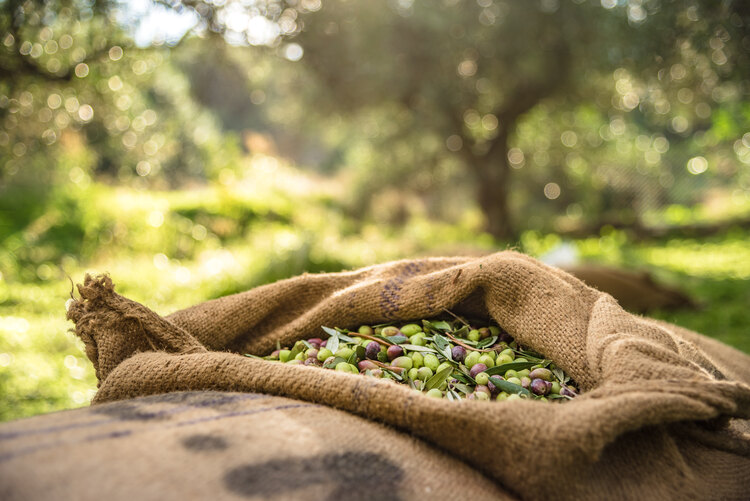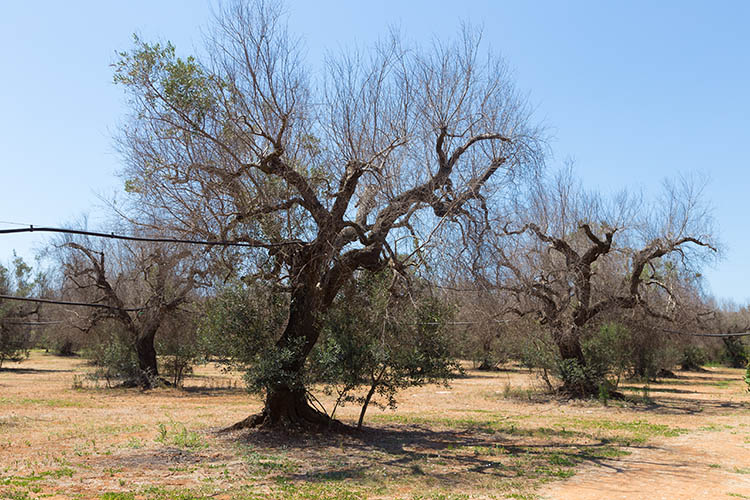
Olive oil prices soar by up to 150 per cent after drought decimates olive harvests around the Mediterranean Basin
By
Can there be anything more iconically Mediterranean than an olive tree? Its ancient, gnarled trunk spreading out into an umbrella-shaped web of branches covered in dark, waxy leaves and festooned in plump, bitter olives.
In the Mediterranean basin, people have been eating olives – and making oil from them – for at least 6,000 years. The olive tree and its fruit (yes, olives are a fruit which, surprisingly perhaps, are related to peaches) are so integral to Mediterranean culture that they have long been considered a symbol of religious belief, with the branches offered to now half-forgotten deities and the oil used, even today, in religious ceremonies across the Mediterranean. Indeed, the olive branch holds such symbolism it’s considered a sign of peace.
Today, these ancient trees (they can live for around 2,000 years) and the fruits they produce are just as important culturally and in the kitchen as they ever have been. It’s almost inconceivable to have a meal anywhere in the Mediterranean that doesn’t contain olive oil. So, imagine a world where olive oil is rare.

You may not have to imagine it for much longer, because olive trees are in trouble throughout the Mediterranean. Olive trees are seriously tough plants that are built to withstand drought, but even so the length and intensity of the drought that has left much of the Mediterranean parched for the last few years has meant that even olive trees are struggling to survive. And this in turn has led to a dramatic decline in olive yields, which has caused the price of olive oil to sky rocket in recent months.
The world’s biggest producers of olive oil are Spain, Italy and Greece, with Spain alone producing around half the world’s olive oil. And it’s Spain that has been hit the worst by drought. The parched conditions have led to olive oil production in Spain in 2022-23 being 50 per cent lower than average; with 630,000 metric tonnes of olive oil produced compared to the more usual 1.4 to 1.5 million metric tonnes. This shortage of oil has pushed up prices in Spanish shops by 150 per cent over the past two years, and in other major producing nations, the price rises haven’t been far behind.
With prices rising so fast, olive oil, a staple of every Spanish kitchen, has become unaffordable to many. Demand for extra virgin olive oil dropped 11 per cent in Spain between January and September 2023 as people changed to cheaper alternatives such as virgin olive oil. This increase in prices has also led to an increase in theft with many supermarket chains in Spain now adding security tags to bottles of olive oil or simply putting them safely behind lock and key.
Spain isn’t the only country to see such big price increases. It’s similar in all traditional olive oil-consuming nations around the Mediterranean area. The UK is currently not as badly impacted due to the overall lower consumption of olive oil, meaning the stock piles within the country last longer, but even here, shelf prices have risen by around 47.4 per cent in a year.
And the fear is the worst is still to come as another long, hot summer has meant that the 2023 winter harvest is likely to end up lower than normal, and forecasters are already predicting an even hotter 2024. The only possible bright spot is that the first part of winter 2023-24 has been mercifully wet in much of the western Mediterranean and meteorologists expect that trend to continue for another couple of months which, it’s hoped, will go some way to re-filling water tables.
Related articles:
Disappearing ice of the Pyrenees
Can the Panama Canal survive drought?
Climate change dries up Iran’s saffron harvest
Drought may pose a bigger threat to Australia’s forests than bushfires




